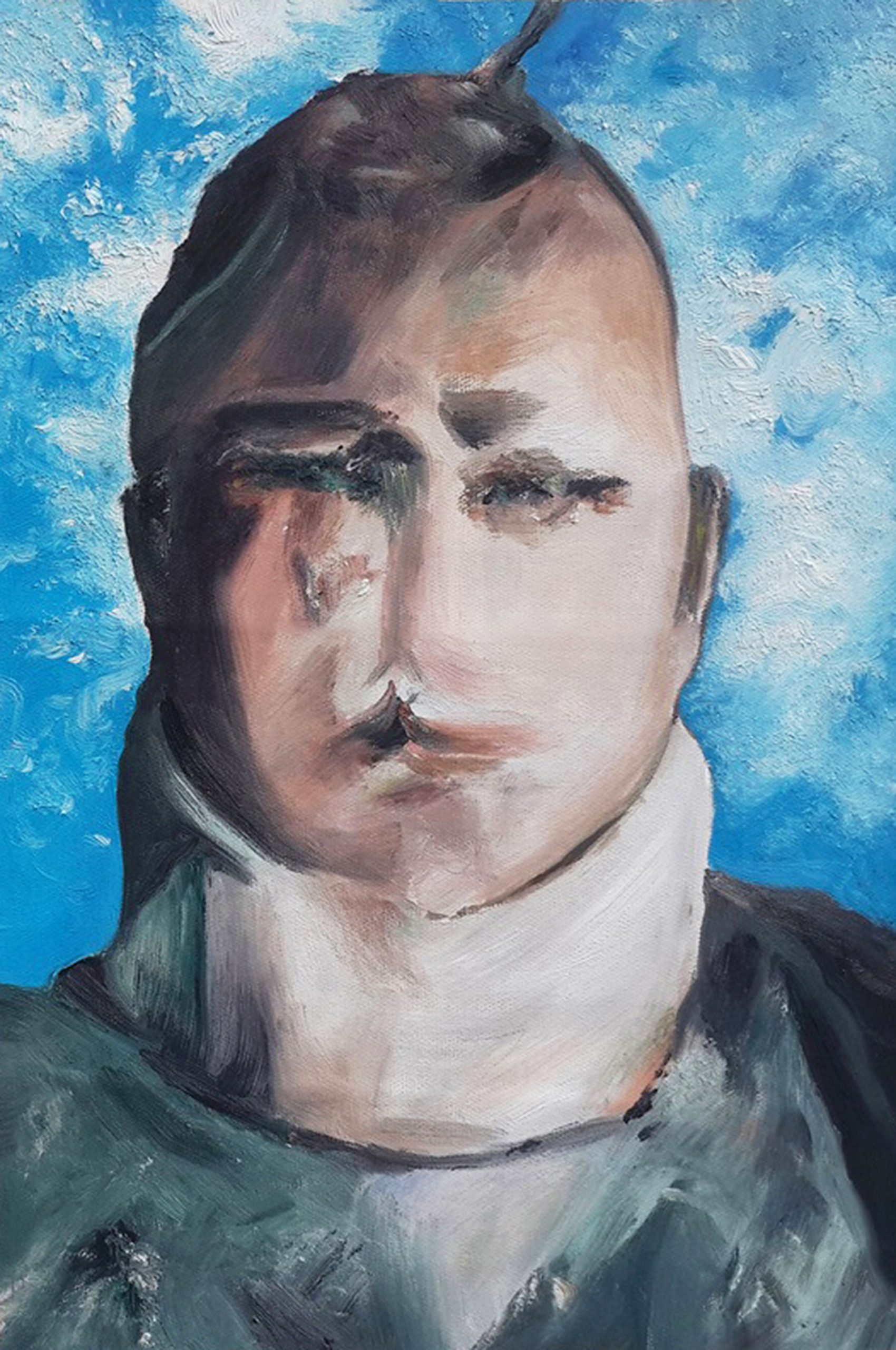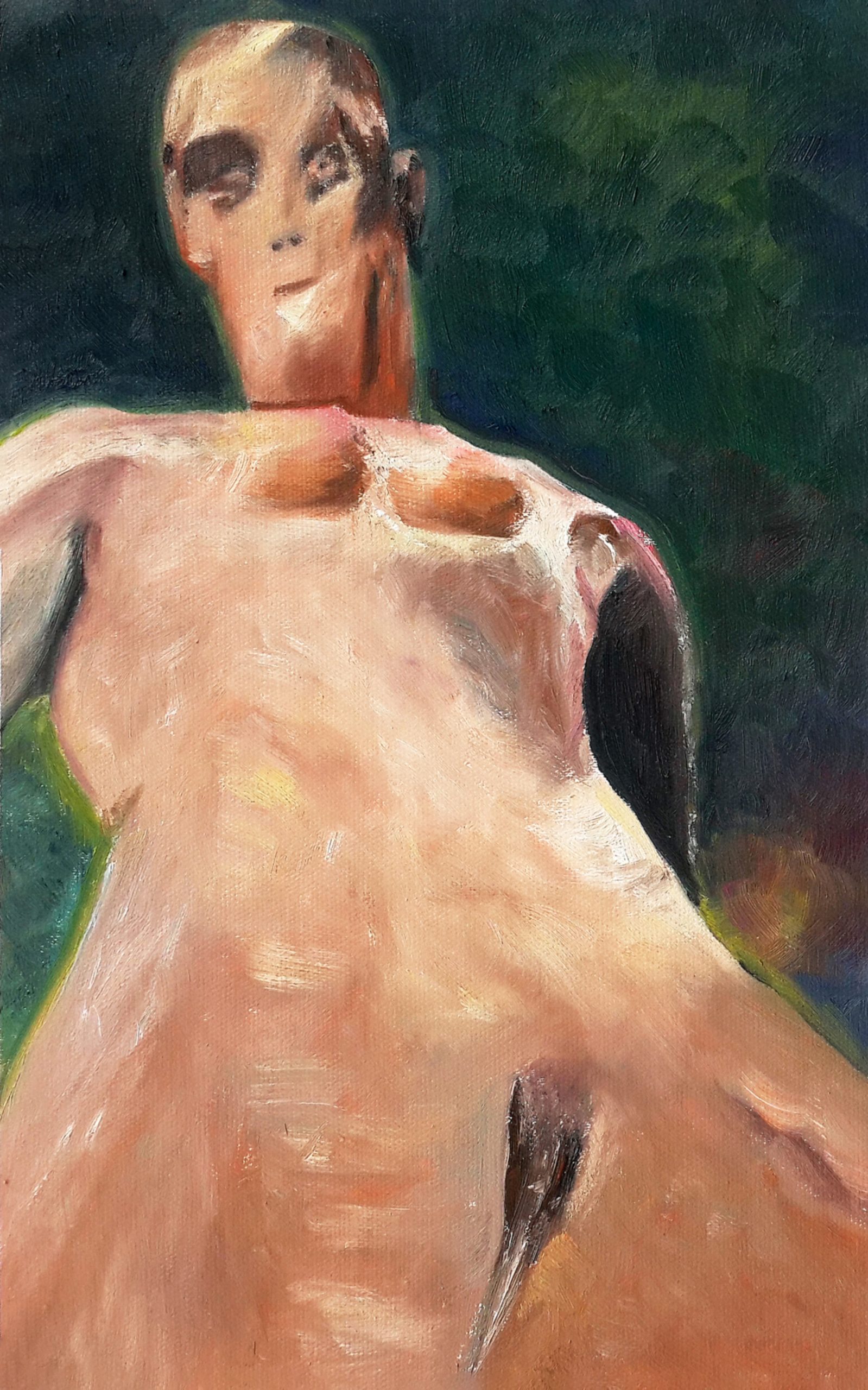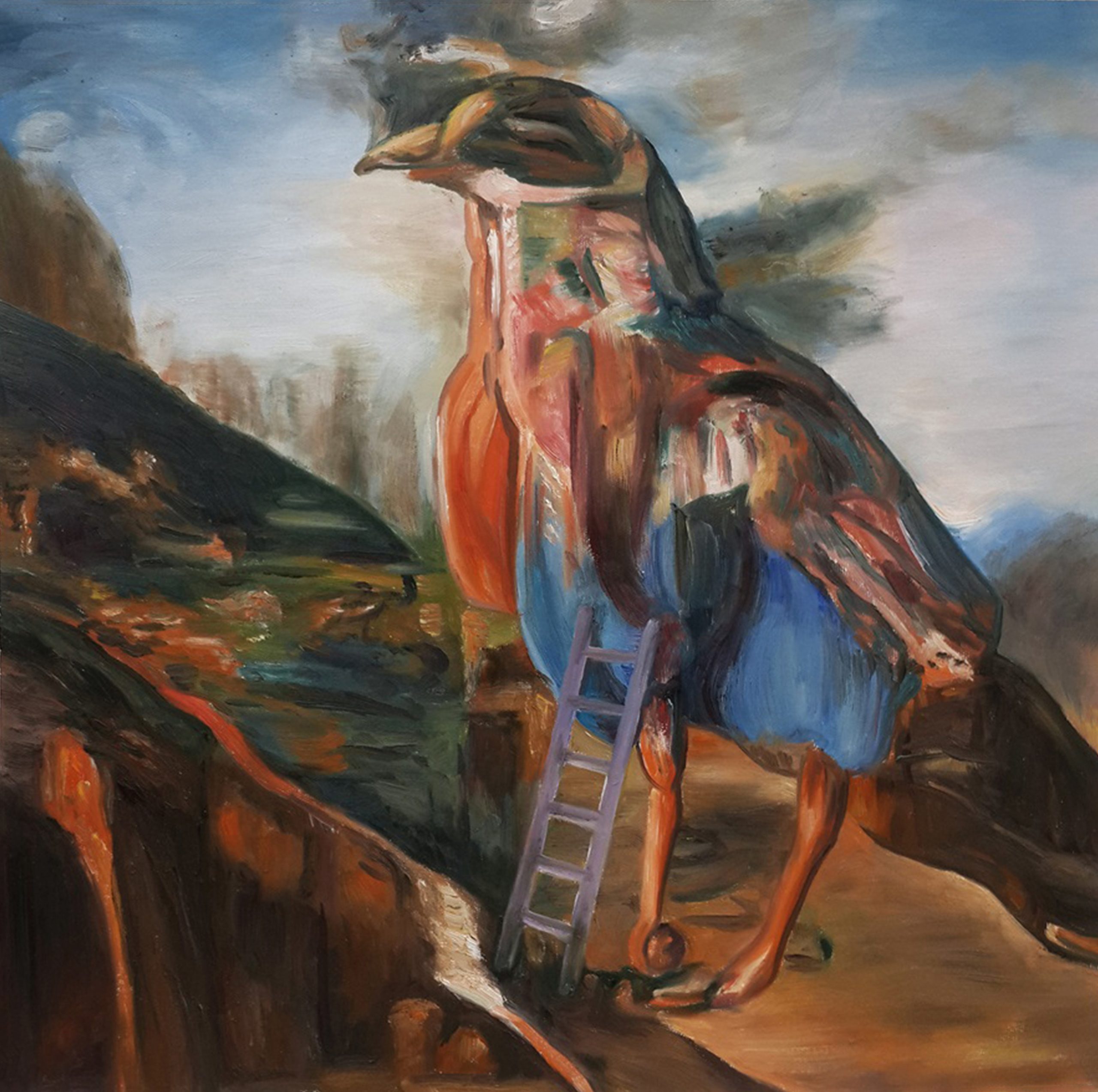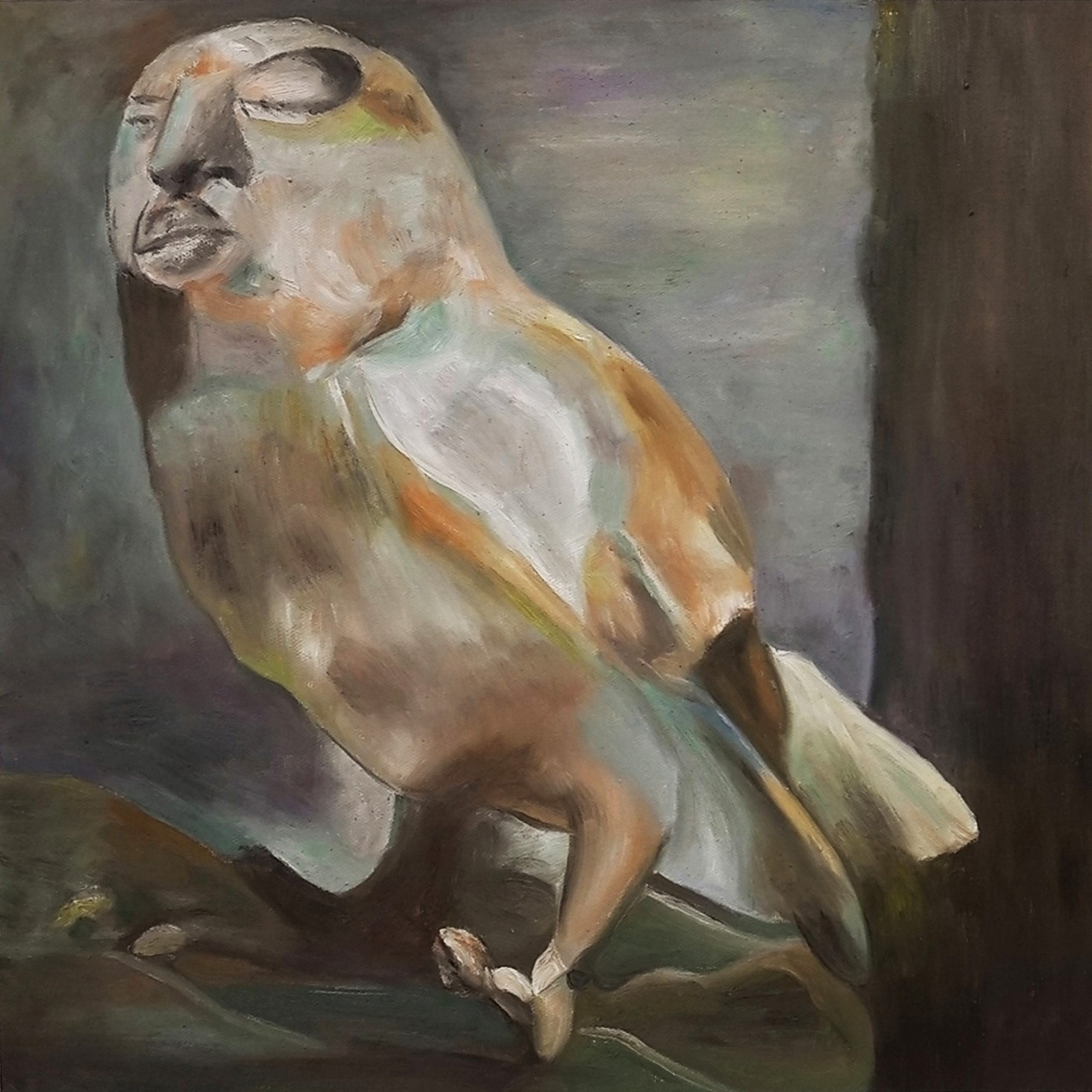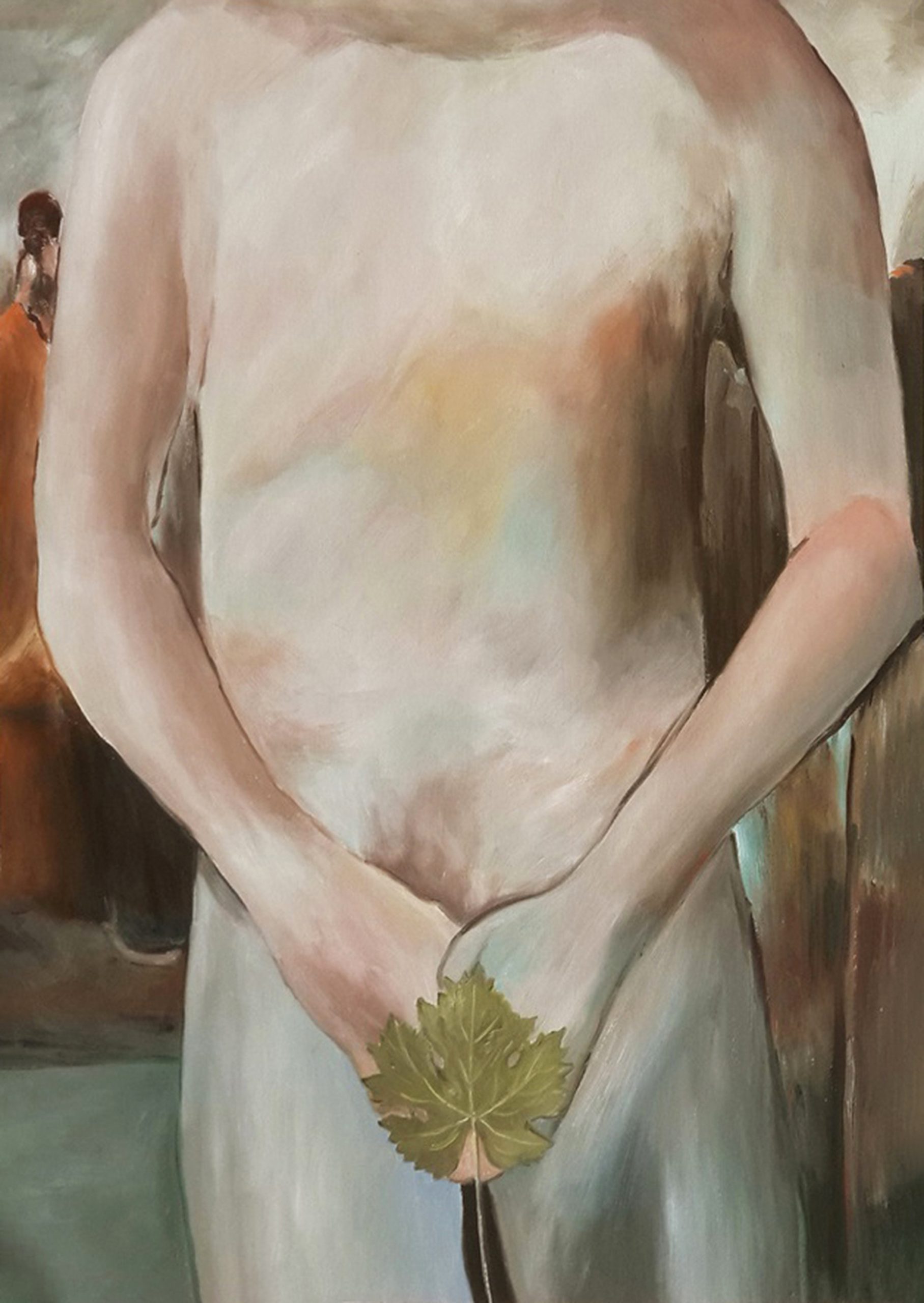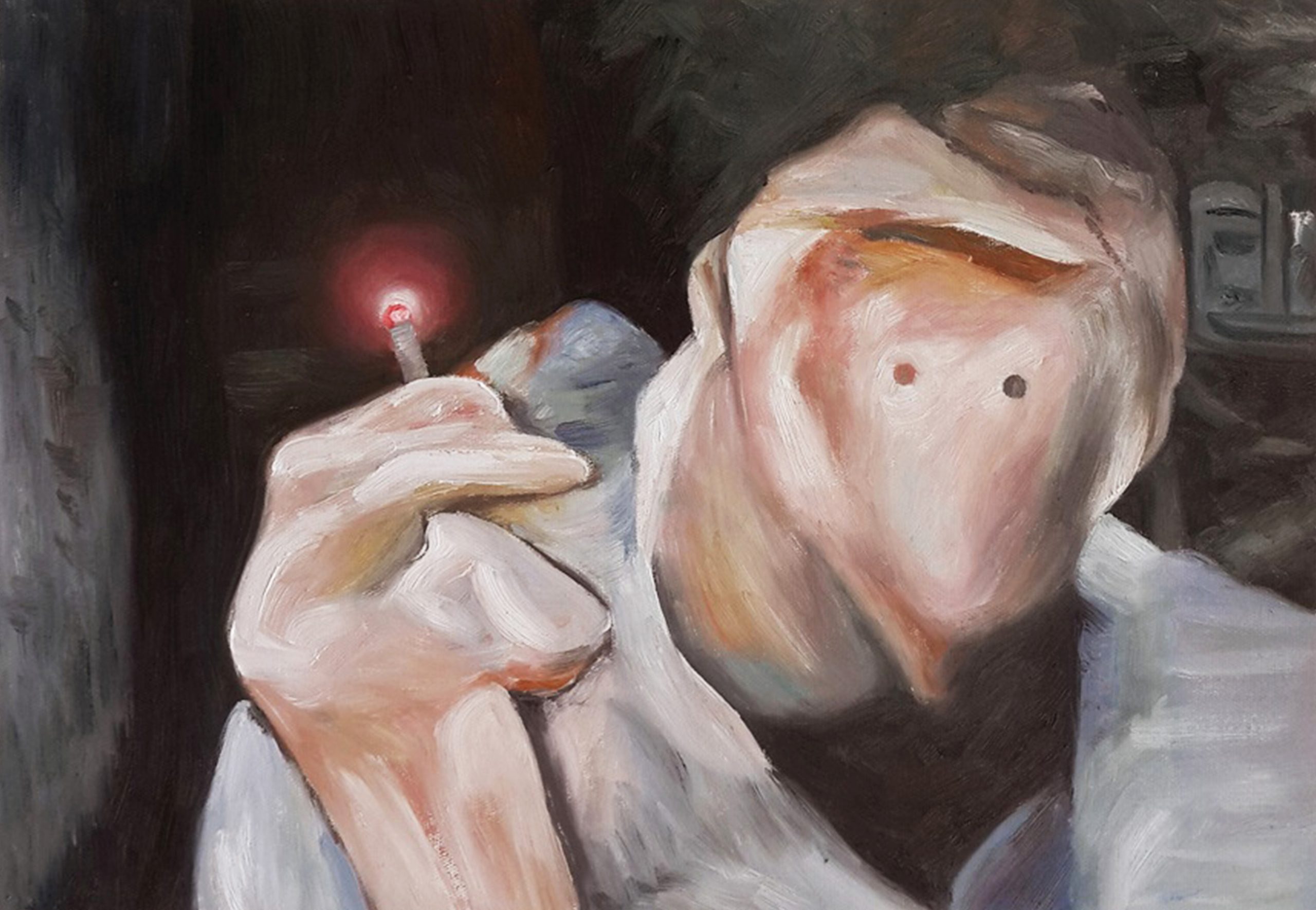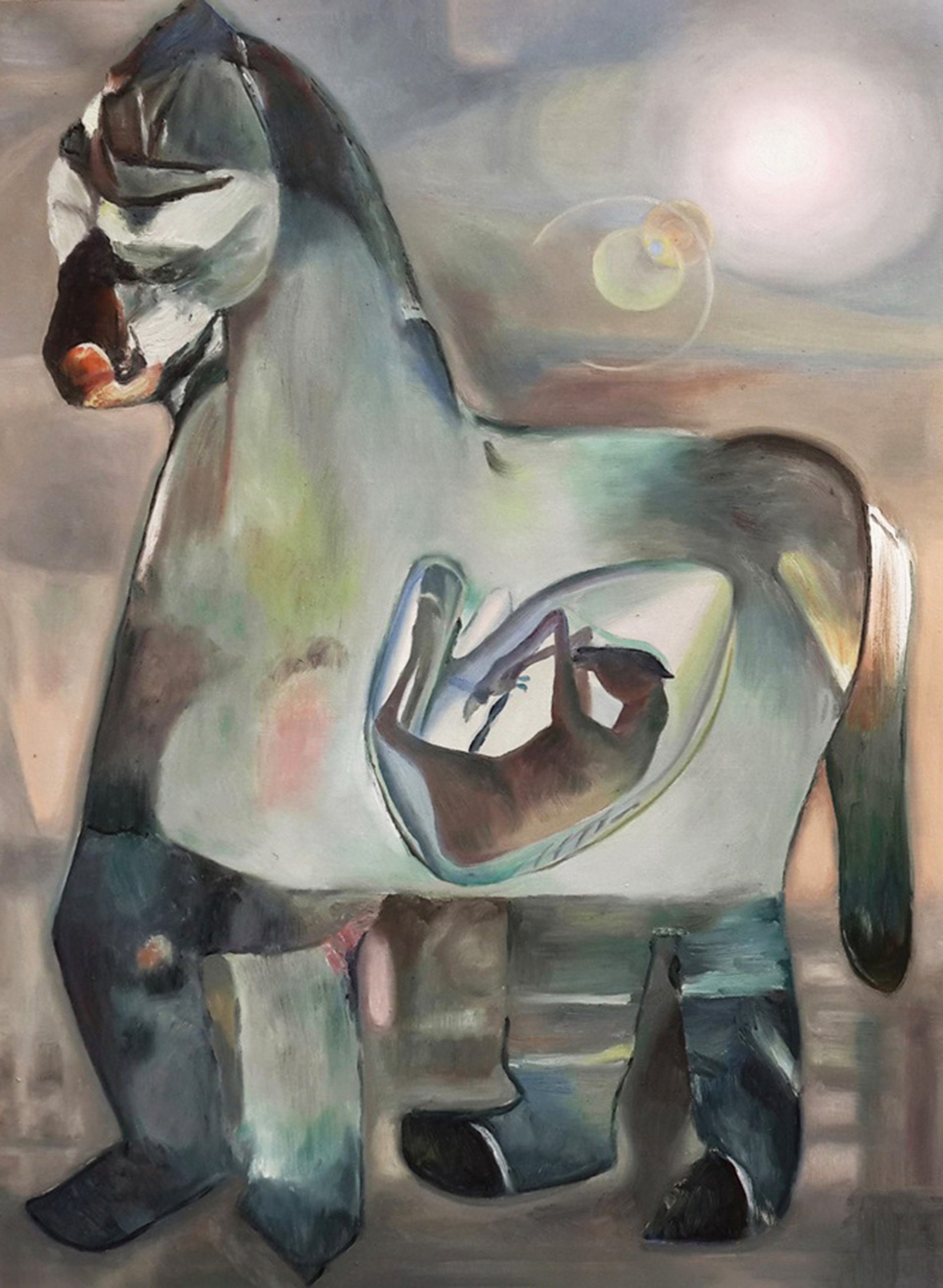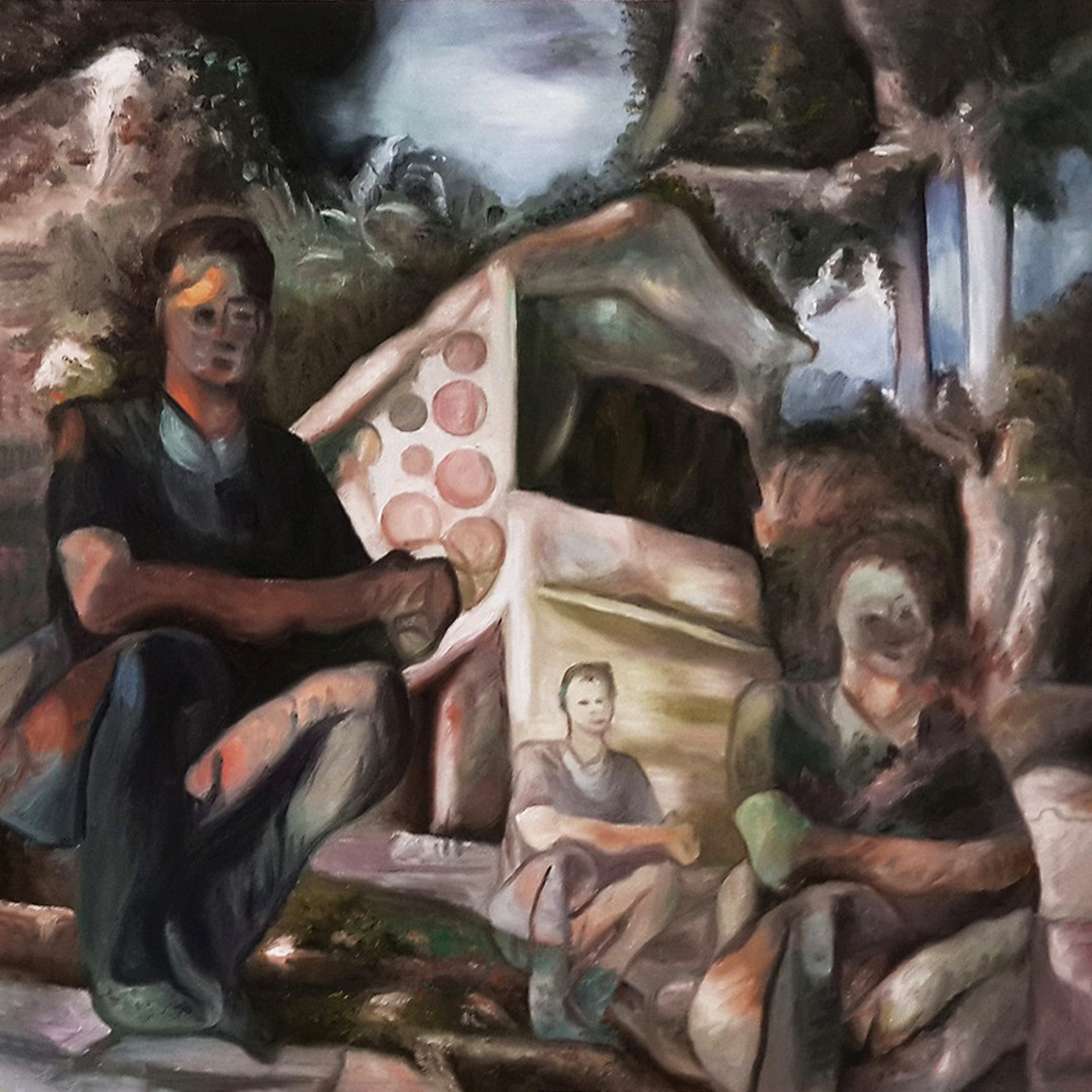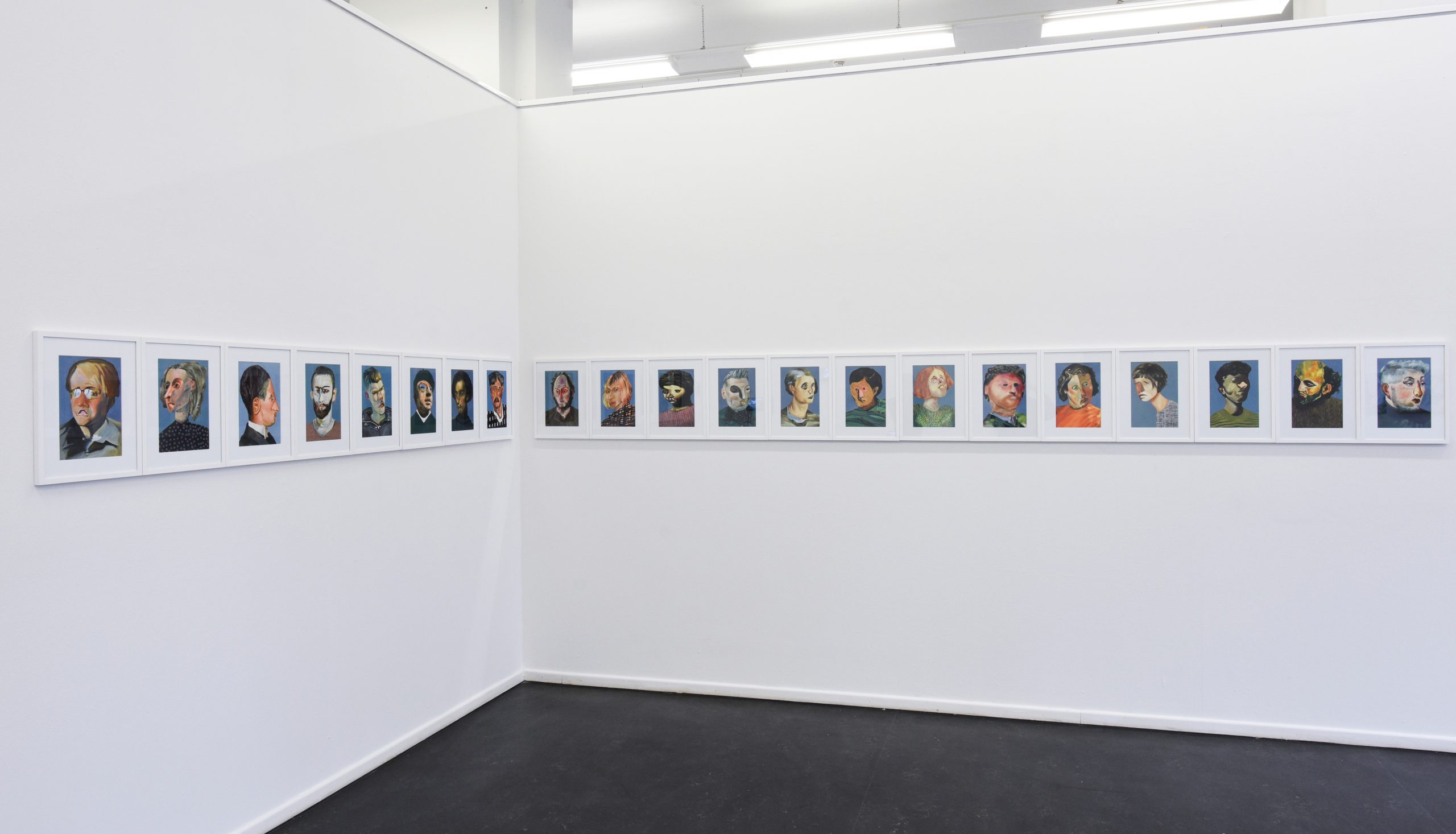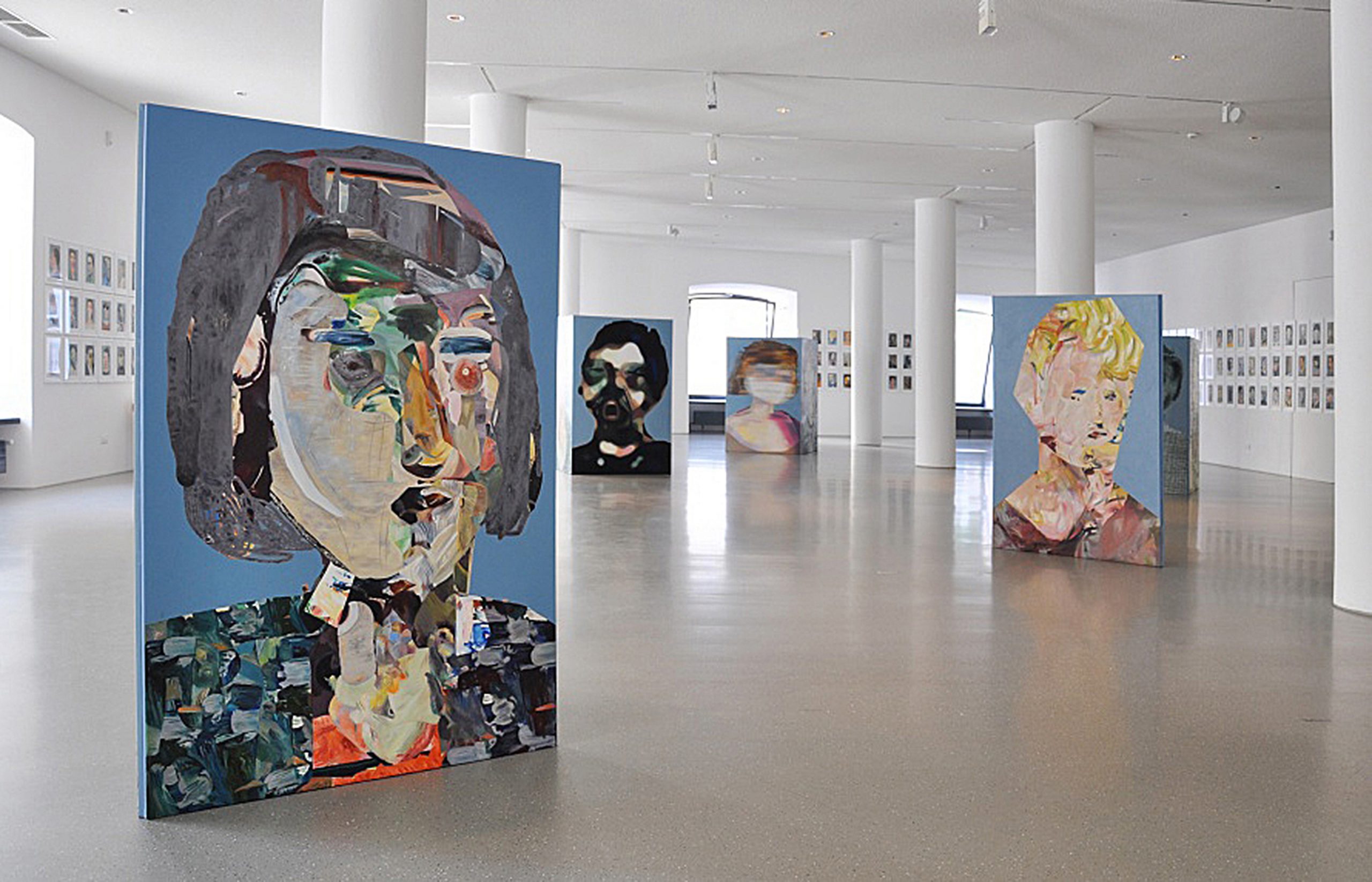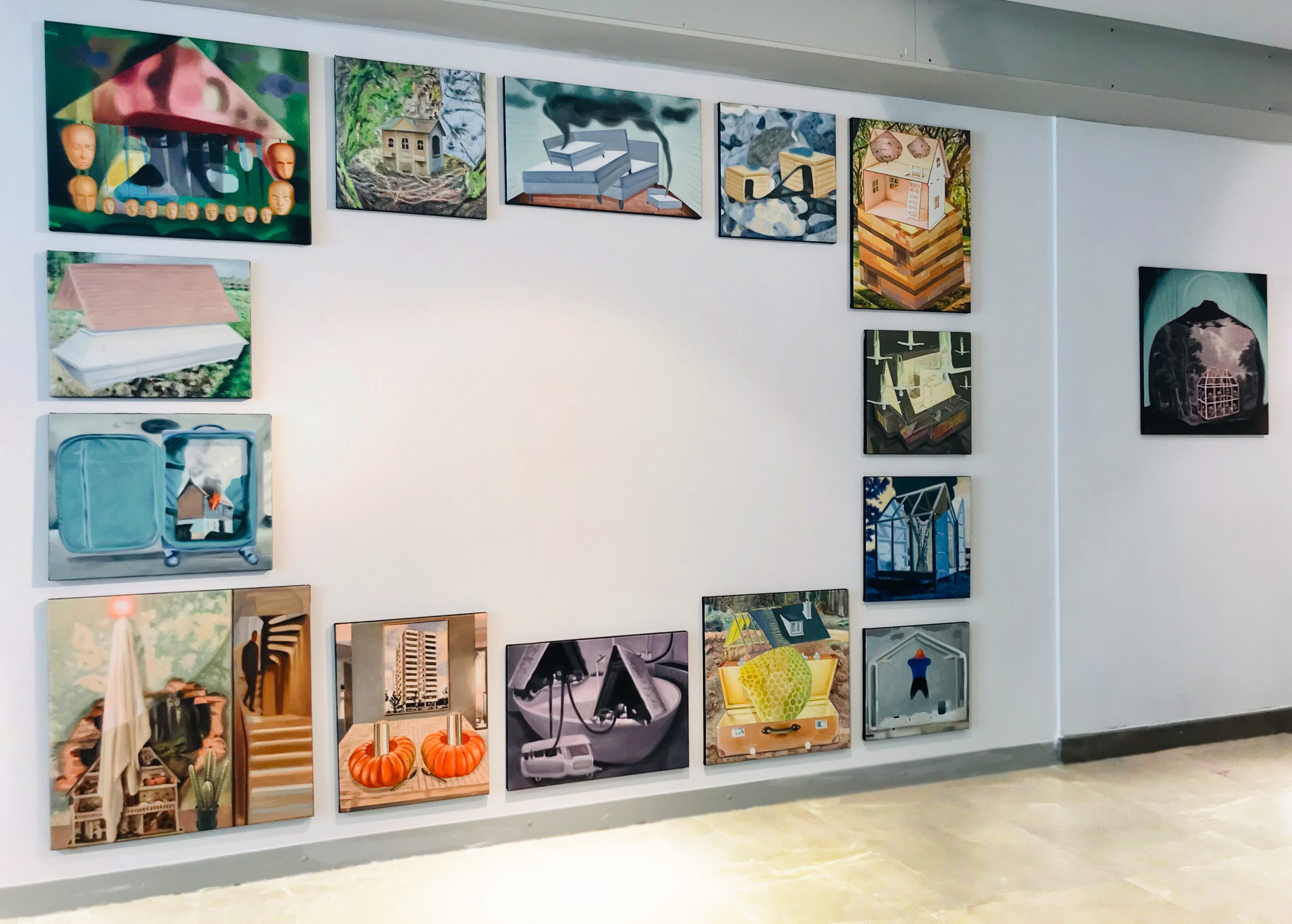1. untitled, Oil on canvas, 2021, 30 x 45 cm, Pelz
2. „Methode“, Oil on canvas, 2021, 50 x 60 cm, Pelz
3. untitled, Oil on canvas, 2021, 25 x 40 cm, Pelz
4. untitled, Oil on canvas, 2021, 58 x 58 cm, Pelz
5. untitled“, Oil on canvas, 2021, 58 x 58 cm, Pelz
6. untitled, Oil on canvas, 2021, 40 x 45 cm, Pelz
7. untitled“, Oil on canvas, 2021, 58 x 58 cm, Pelz
8. untitled, Oil on canvas, 2021, 50 x 70 cm, Pelz
9. Pelz „Patient“, Oil on canvas, 2021, 35 x 50 cm, Pelz
10. „Mum“, Oil on canvas, 2021, 50 x 75 cm, Pelz
11. untitled, Oil on canvas, 2021, 45 x 50 cm, Pelz
Exhibition View. „Daily“, Kunstbezirk Stuttgart, 2022, Pelz
Exhibition View. „Präsentiert Paula Pelz“, Museum Prediger Schwäbisch Gmünd, 2020, Pelz
Biography
Paula Pelz
Paula Pelz was born in Filderstadt, Germany, in 1984.
Pelz studied at the Stuttgart Academy of Fine Arts with Prof. Christian Jankowski from 2007 – 2015. In 2011 she completed an Erasmus scholarship in Basel. In 2018, the Meisterschüler title followed as part of the Weißenhof programme.
Pelz has participated in numerous exhibitions at home and abroad. Among others, she presented works in New York / USA, Bogotà / Colombia, Istanbul / Turkey or at exhibitions in London.
In 2020, she was awarded the 16th Volks- und Raffeisenbank Art Prize. Pelz is a member of the Deutscher Künstlerbund e.V.
Solo exhibitions (selection)
2021
“Szenefenster”, solo exhibition with J. Mangold, Kunstmuseum Stuttgart, Stuttgart
2020
“Presents Paula Pelz”, Museum Prediger, Schwäbisch Gmünd “Presented Paula Pelz 2”, artig e.V., Kempten
2019
“Undiluted”, with J. Mangold, Kunstverein Heidenheim, Heidenheim “Pa-n-a-zee”, with J. Mangold, Sebastianskapelle Gallery, Ulm “Elixus”, with J. Mangold, Neuhausen Art Association, Neuhausen
2018
“Retrospective 2”, Kunsthalle Kempten, Kempten
J.-H. Pelz & Johanna Mangold: “Twenty three and some more”, Oberwelt e.V., Stuttgart
2017
“Retrospective”, Kunstverein Friedrichshafen, Friedrichshafen
J.-H. Pelz & Johanna Mangold: “Allelopath”, Kunstraum Zumhof e.V., Rudersberg-Zumhof
2016
Art@work 11: “Painting by Numbers”, touring exhibition, TI&M, Zurich / Bern / Lausanne, Switzerland “Lichtschleuse”, Museum Schloss Fachsenfeld, Aalen-Fachsenfeld, Germany
Sunrise Salon, Salon Neucologne e.V., Berlin
2015
“Blendwerk”, Gmünder Art Association, Schwäbisch Gmünd
2014
“LandEscape 2”, ART Seefeld Gallery, Zurich, Switzerland
“Sensations”, Wäscherburg Castle, Wäschenbeuren, Germany
“Favorites”, 67th Locarno International Film Festival, Galeria Fuori Orbita, Locarno, Switzerland
2013
“Radura”, Galeria Fuori Orbita, Locarno, Switzerland “Zweigstellen”, Kunstverein Ludwigsburg “LandEscape”, Ebnat 65, Schaffhausen, Switzerland
2012
“Birdscape”, Lorch Monastery, Germany
“Birdscape 2”, City Hall Schwäbisch Gmünd, Germany
2010
“Pelz. New works”, Stuttgarter Künstlerbund
Echoes of the surreal dominate paintings by Paula Pelz, whose colourful world view carries allusions to mythology and everyday reality. Her protagonists seek direct eye contact with the viewer. Executed in gestural brushstrokes they look vulnerable and insolent at the same time. Abstracted human and animal figures are often constricted, their luminously transparent contours are merged and superimposed creating unexpected transparencies. These are powerfully expressive sometimes aggressive images held in colours changing from light skin tones to earthy-brown, green, blue and greyish. Torsos and portraits filling the whole picture plane obstruct the view into the depth. The longing for authenticity and sensual experience is characteristic of the Pelz’s style. She combines elements of decomposition of the figure in front with views revealing the inner realms of the body ushering is inside, and thus creating see-through effects. This results in strong tensions between the real and the surreal pointing to liminal mental states. Simultaneity of life, natural environments, sounds and movements are visually conveyed to the viewer with striking and expressive vigour. Especially the imaginary winged creatures, birds with gleaming eyes and human faces carry symbolic allusions. Animals are depicted in their creaturely existence, possessing a soul of their own, birds stand as metaphors for freedom. Both human figures, portraits and animals possess in her works a sensitive sensuality. Her obsessive and haunting imagery recalls the expressionist tradition in painting offering a surprising connection to the reality of life as well as to the imaginary worlds.
DE
Surreal anmutende Motive dominieren die Bilder von Paula Pelz, deren farbintensives Weltbild Anspielungen auf Mythologie und Alltagsrealität enthält. Ihre Protagonisten suchen den direkten Blickkontakt mit dem Betrachter. In gestischen Pinselstrichen ausgeführt, wirken sie verletzlich und anmaßend zugleich. Abstrahierte Menschen- und Tierfiguren sind oft eingeengt, ihre leuchtend durchsichtigen Konturen verschmelzen und überlagern sich zu unerwarteten Transparenzen. Es sind ausdrucksstarke, manchmal aggressive Bilder, die in Farben gehalten sind, die von hellen Hauttönen über erdiges Braun, Grün und Blau bis hin zu Grautönen reichen. Torsi und Porträts, die die gesamte Bildfläche ausfüllen, versperren den Blick in die Tiefe. Die Sehnsucht nach Authentizität und sinnlicher Erfahrung ist charakteristisch für den Stil von Pelz. Sie kombiniert Elemente der Zerlegung der vorderen Figur mit Einblicken in das Körperinnere, die den Blick nach innen lenken und so Durchsichtigkeitseffekte erzeugen. Daraus ergeben sich starke Spannungen zwischen dem Realen und dem Surrealen, die auf mentale Grenzzustände verweisen. Die Gleichzeitigkeit von Leben, natürlichen Umgebungen, Geräuschen und Bewegungen wird dem Betrachter mit beeindruckender Ausdruckskraft visuell vermittelt. Vor allem die imaginären geflügelten Kreaturen, Vögel mit leuchtenden Augen und menschlichen Gesichtern tragen symbolische Anspielungen. Tiere werden in ihrer kreatürlichen Existenz dargestellt, die eine eigene Seele besitzen, Vögel stehen als Metaphern für Freiheit. Sowohl menschliche Figuren, Porträts als auch Tiere besitzen in ihren Werken eine sensible Sinnlichkeit. Ihre obsessive und eindringliche Bildsprache erinnert an die expressionistische Tradition in der Malerei und bietet eine überraschende Verbindung zur Lebenswirklichkeit wie auch zu den imaginären Welten.

